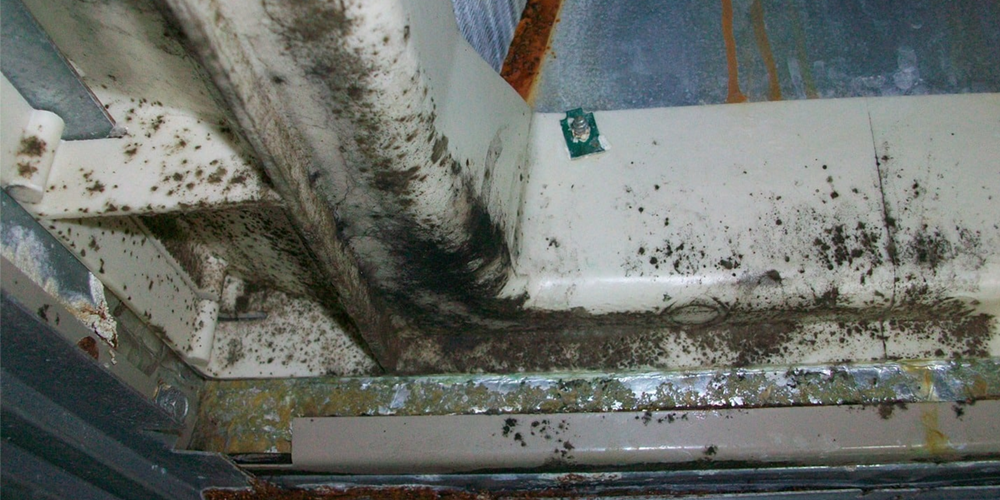
Mold on Metal
Mold on metal can appear in various ways depending on the type of mold and the conditions in which it grows.
1. Color: Mold can be in various colors, including black, green, gray, white, or even orange and pink. The color often depends on the species of mold.
2. Texture: Mold on metal can have a fuzzy or powdery texture. It might look like small spots or patches that spread over time if left untreated.
3. Appearance: Initially, mold on metal may appear as small specks or dots. As it grows, it can form larger colonies or patches. The surface might look discolored or irregular.
4. Odor: Mold growth is often accompanied by a musty or earthy odor. However, the presence or strength of this odor can vary depending on factors like the type of mold and the environment.
5. Moisture: Mold thrives in moist environments, so you might notice mold on metal surfaces that are regularly exposed to moisture or humidity. For example, metal objects stored in damp areas or in contact with water can develop mold.
How to Prevent Mold Growth on Metal Surfaces?
Preventing mold growth on metal surfaces involves several strategies to control moisture, maintain cleanliness, and create an inhospitable environment for mold. Here are some effective methods to prevent mold growth on metal surfaces:
1. Keep Surfaces Dry: Moisture is a primary factor in mold growth. Ensure metal surfaces are kept dry and free from standing water or excessive humidity. Wipe down surfaces regularly to remove any moisture accumulation.
2. Control Humidity: Use mold remediation dehumidifiers in areas prone to high humidity, such as basements, bathrooms, and kitchens. Maintain indoor humidity levels below 60% to discourage mold growth. PREAIR offers the smart and efficient dehumidifier for mold. Contact us if you have a metal factory.
3. Improve Ventilation: Proper ventilation is crucial in preventing mold. Ensure good airflow by using exhaust fans in bathrooms, kitchens, and laundry rooms. Open windows periodically to allow fresh air circulation.
4. Address Leaks and Water Intrusion: Repair any leaks in plumbing, roofs, or windows promptly. Water intrusion can lead to moisture buildup, creating favorable conditions for mold growth on metal and other surfaces.
5. Use Mold-Resistant Materials: Consider using mold-resistant paint or coatings on metal surfaces, especially in areas prone to moisture exposure. These products inhibit mold growth and make surfaces easier to clean.
6. Regular Cleaning: Clean metal surfaces regularly with soap and water to remove dirt, dust, and organic matter that can support mold growth. Pay attention to areas that are often overlooked, such as corners, crevices, and behind appliances.
7. Apply Mold Inhibitors: Certain commercial mold inhibitors and cleaners are designed specifically for metal surfaces. Follow manufacturer instructions when using these products to ensure effectiveness and safety.
8. Monitor and Maintain: Regularly inspect metal surfaces for signs of moisture, discoloration, or mold growth. Address any issues promptly to prevent mold from spreading.
By implementing these preventive measures, you can significantly reduce the risk of mold growth on metal surfaces and maintain a healthier indoor environment.
Post time: May-14-2024
 +86-13376814803
+86-13376814803  robert@hzhongtai.com
robert@hzhongtai.com 












